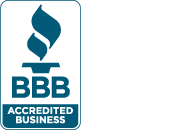For some, building relationships comes naturally, and to others it may seem like the most stressful thing to do. We get it! We understand. Most nonprofit leaders are focused on community work. You know, rolling up the sleeves and planting the seeds, or reading books and educating the youth. Talking to an individual, group, or company that has the financial resources to change the organization’s status from struggling to sustaining can be somewhat intimidating and outright scary. What if they don’t like you, what if you forget to tell them something important, what if they say No? These are just a few thoughts that may run through your mind when thinking about making that connection and building a donor relationship.
If this sounds like you, its ok. We want you to know that you are not alone. There are many organization leaders that feel the same way. So, we have gathered a list of a few things you can do to ease into building relationships.
Personalize Communication
Personalizing communication is important for both the organization and the donor. While many think it is outdated, a firm handshake, a well-placed Hello, or an introduction email are still great ways to start building a relationship. Building a relationship is important to nonprofit organizations because the contacts you make are like currency. Donors become a part of the organization’s support system and can help the organization in many ways in addition to providing financial assistance. When used correctly, personalized communication provides a level of respect and understanding that can lead a donor to expand your reach through their network. Although you may not become best friends, personalized communication can build a relationship that provides access to opportunities that may otherwise be unavailable to the organization. For the donor, it gives them insight into the organization, its leadership, programs, and plans.
Impact and Transparency
As a nonprofit organization, a lot of what you do is open and available to the public. This creates transparency for the community served, supporters, and donors. Transparency allows for the impact of the organization to be seen. Through transparency, the organization can illustrate how they serve the community, how funding is spent as well as impact stories from programs and services. When building a relationship with donors and supporters, this information becomes very important as to how and why they chose to support you. Through different channels of communication, such as newsletters, reports, or videos, an organization can use its transparency to keep supporters informed of their progress and showcase the impact of their contributions.
Involvement in your mission
The best way for someone to understand your mission is to be a part of the mission. When building a relationship with donors and supporters, consider ways they can participate in the mission that go beyond financial support. These opportunities can involve volunteering within programs or services, invitations to events and/or board membership. For example, you can invite a donor to participate in volunteer day where they can meet and interact with the community served by the organization. This opportunity allows the donor to witness firsthand the impact of their contribution and support, directly from those whose lives have been positively affected. Having this hands-on experience will add to the relationship you are building with the donor.
Recognition and Appreciation
Saying “Thank you” can go a long way in any situation. When building a relationship with donors and supporters, it’s important to recognize them for their contributions and show appreciation. While most people want to be recognized for the good deeds they have done, some want to stay behind the scenes. Before recognizing the donor or supporter, ask them if they want to be recognized. Recognition can range from a post on social media to a name on a building. When considering different ways to recognize the donors, it’s good practice to have different levels so donors can choose a space they feel comfortable in.
This same model can be used when showing appreciation for your supporters. Showing appreciation is a little more on the line of saying “Thank you” but how it is presented can make a difference in the relationship between you and the donor. Appreciation can be shown through an appreciation event that is dedicated to your supporters and showing how their support made a difference and how it has impacted those involved. It can be shown through items that were created by the community impacted. For example, a youth group may write “Thank you” cards or create arts and crafts pieces. Supporters can also be highlighted in newsletters, podcasts, or exclusive areas of the organization.
Conclusion
As a nonprofit organization, building strong, long-lasting relationships with donors and supporters is essential to achieving its goals. By personalizing communication, involving donors in impactful experiences, and showing genuine appreciation, nonprofits can deepen these relationships, providing donors and supporters with valuable insights that strengthen their connection to the organization.
As consultants, BryteBridge Nonprofit Solutions is here to help you navigate this journey and unlock your nonprofit’s full potential. For more information, join BryteBridge Connect Membership for Live Bootcamps, Webinars, and classes. Speak to a BryteBridge Consultant today by calling 877-857-9002.



